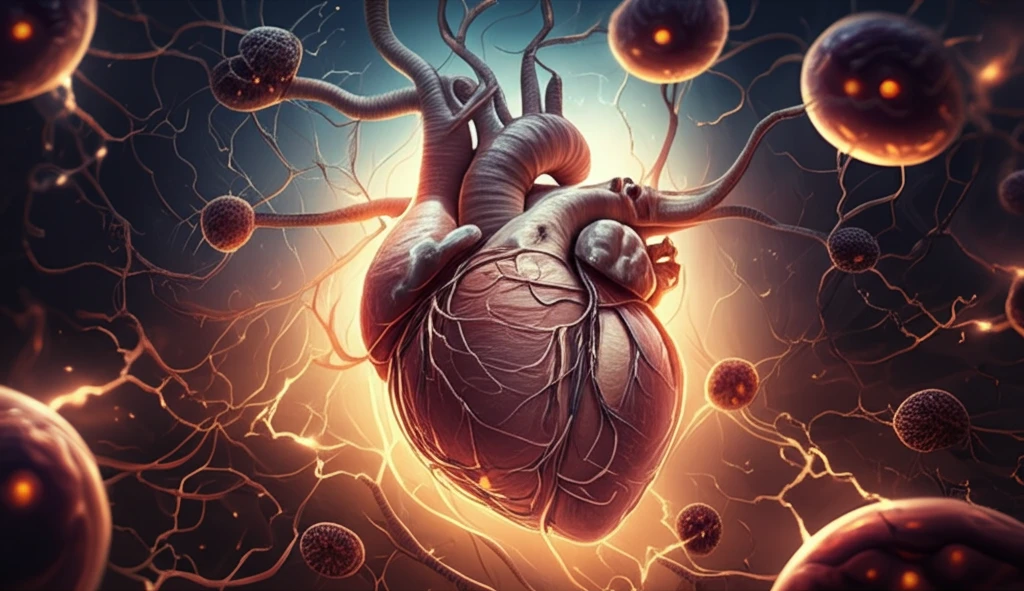
Heart Regeneration: Can Stem Cell Therapy Mend a Broken Heart?
"Exploring the Promise and Pitfalls of Stem Cell-Derived Cardiovascular Cells in Cardiac Repair"
The human heart, while resilient, possesses a limited capacity to repair itself after significant damage, such as a myocardial infarction. The body's natural response often involves remodeling, where the remaining heart muscle thickens (hypertrophy) and scar tissue forms (fibrosis). Although these processes provide short-term stability, they can disrupt the heart’s electrical system, leading to dangerous arrhythmias.
For years, scientists considered the adult heart a static organ, unable to regenerate. However, recent studies have revealed that the heart is far more dynamic, with cells, including cardiomyocytes (heart muscle cells), constantly renewing throughout life. This discovery ignited interest in regenerative medicine, aiming to harness the heart's natural healing abilities to treat heart disease.
The concept of delivering new, healthy cells to the heart to repair damaged tissue and restore function has been aggressively investigated. Although promising, introducing new cells into the complex environment of the heart can be a double-edged sword. While the goal is to replace damaged tissue with healthy, functional myocardium and reduce arrhythmia risk, the delivered cells can also introduce conditions that could trigger arrhythmias.
What Cell Source is Best for Cardiac Repair?

Researchers have explored various cell sources to mend damaged hearts. These cells fall into two main categories: autologous (from the patient's own body) and allogeneic (from a donor). Autologous cells offer the advantage of being less likely to be rejected by the immune system, reducing the need for powerful immunosuppressant drugs. However, obtaining and preparing these cells can be costly and time-consuming.
- Skeletal Myoblasts: Were among the first cell types investigated. While they can form viable grafts and improve heart function, they differentiate into skeletal muscle instead of cardiac muscle, disrupting the heart’s electrical signals.
- Fetal Cardiomyocytes: Can integrate into the heart and form connections with existing heart cells. However, they are difficult to obtain in sufficient quantities and vulnerable to ischemia (lack of blood supply). Ethical concerns also limit their use.
- Mesenchymal Stem Cells (MSCs): Secrete factors that can promote blood vessel formation and reduce inflammation, protecting existing heart tissue and blunting adverse remodeling.
- Induced Pluripotent Stem Cells (iPSCs): Generated by reprogramming adult cells to an embryonic-like state. This technology allows for patient-specific cells that can differentiate into various heart cell types. However, concerns remain about their long-term stability and potential for tumor formation.
What's Next in Cardiac Cell Therapy?
Cardiac cell therapy stands at the cusp of a new era in cardiovascular medicine. The data reviewed reveals a complex interaction between the mode of cell delivery, the type of donor cells, and the nature of the underlying cardiac disease. There are a host of advantages that could impact cardiac outcomes including a range of paracrine and mechanical impacts, and rarely generation of new cardiomyocytes. However, determining if a cell therapy is proarrhythmic or antiarrhythmic will rely on further experimentation.
